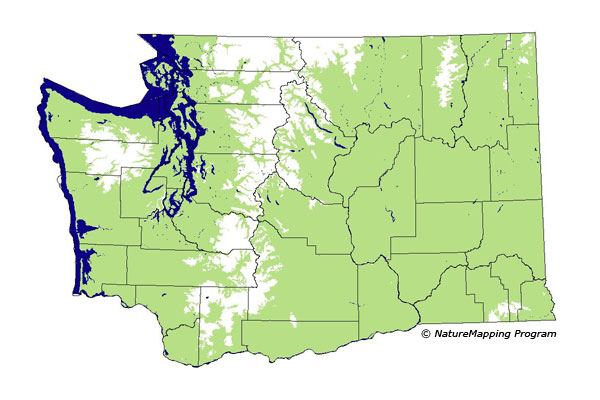


Red-winged Blackbird (Agelaius phoeniceus) What they look like: The Red-winged Blackbird is a medium-sized songbird found in wetland areas. The male is black with bright red and yellow shoulders, while the female looks pale with brown feathers and stripes all over. The adult male can hide the brilliant red shoulders or show them off in a dazzling display. 
Calls:
The call is a gurgling "oak-a-lee." Call a dry "chek" and "cheer." Where they live: The range of red-winged blackbirds extends from southern Alaska at its northern most point, to the Yucatan peninsula in the south and covers the greater part of the continent reaching from the Pacific coast of California and Canada to the eastern seaboard. In North America Red-winged Blackbirds roost and breed in a variety of habitats, but tend to prefer wetlands. They have been known to live in fresh and saltwater marshes. On drier ground, red-winged blackbirds gravitate towards open fields (often in agricultural areas) and lightly wooded deciduous forests. This aggressive species is widespread and abundant at lower elevations of the State of Washington, in, virtually every habitat as long as a suitable microhabitat with emergent vegetation is available. They can be found along roads where ditches have created suitable habitat. Rarely, they will nest in upland shrubby areas. Click the range map to learn more about the distribution of Red-winged Blackbirds in Washington. What they eat: Red-winged Blackbirds eat insects, seeds, and grain. 
Nesting: The female Red-winged Blackbird lays 3 to 4 eggs. She incubates the eggs up to 11 days until they hatch. The eggs are pale blue-green with dark streaks and splotches. The nest is an open cup woven of grass or marsh vegetation and wet leaves. It's filled with dried mud and lined with fine grass. The nests are woven between several stems, typically over water in a marsh area often surrounded by cattails and tall grass. Chicks fledge in 10 to 14 days and are fed by the female and, to a lesser degree, the male until the fledglings become independent after 2 to 3 weeks. Juveniles typically reach sexual maturity in 2 to 3 years. Behavior: During the breeding seasons, males are very territorial. When singing to defend the territory or to attract a female, the male fluffs the red epaulettes and half-spreads his wings to display the red and yellow feathers. (see photo) Click to play sounds of the Red-winged Blackbird | More songs > Did you know?:
Animal silhouettes available to purchase » Photos: Natures Pics More information: All About Birds: Red-winged Blackbird Birds of North American Online: Red-winged Blackbird Home | About Us | How to Participate | Biodiversity Modules | Projects | Maps | News | Resources |